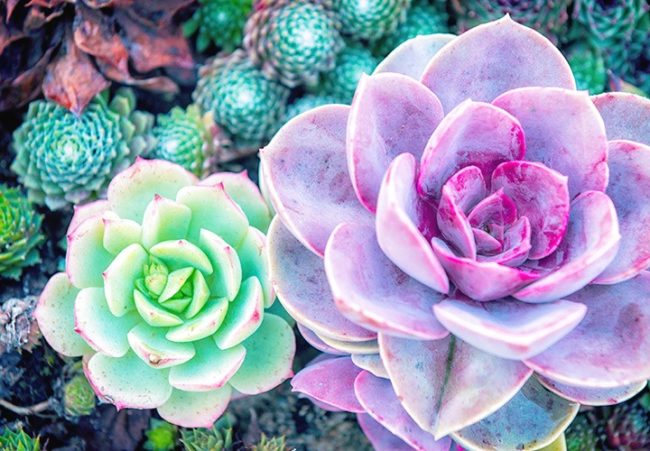From the colorful Paddle Plant, to the adorable Burro’s Tail, desert plants of all shapes and sizes can be found everywhere these days. Many succulents can be planted just about anywhere, from crafty DIY terrariums to exotic desert gardens. They’re low maintenance, drought-tolerant, and are available in a variety of shapes and sizes, making them incredibly easy to incorporate into your home decor.
To help you identify your favorite desert plants, FTD created a visual compendium of of the most stunning desert plants and succulents. It features real photo examples so that you can easily choose the best plants for your home and garden. Checkout the compendium below, you’ll be sure to discover a few exotic species that you’ve never seen before!
GHOST PLANT
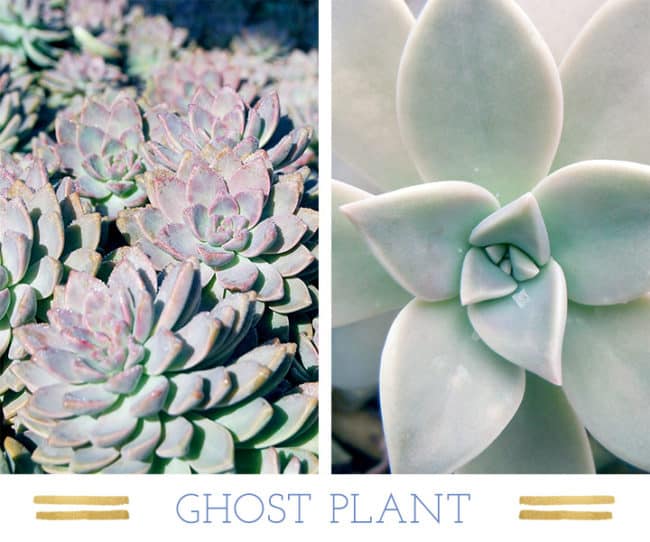
The ghost plant is probably one of the most popular succulent plants used today. Chances are, you’ve seen it in the succulent gardens and indoor terrariums that have become so popular in landscape and home decor. Also known by its scientific name as Graptopetalum paraguayense, it is one of the easiest succulent plants to take care of. Depending on the level of sunlight it receives, these plants can take on various colors ranging from blue-gray to pinkish yellow. When new rosettes form at the tips of its stems, its old leaves fall off. During springtime you can witness the ghost plant producing bright yellow flowers.
2. PENCIL PLANT
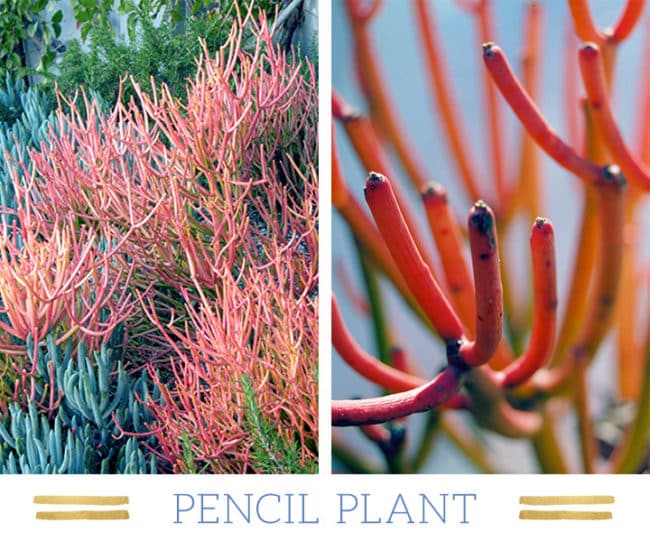
A popular choice amongst modern landscapers, these succulents are widely used in drought-tolerant landscaping, or xeriscaping. Also known as Euphorbia tirucalli, the plant’s green pencil-like sticks turn bright coral when the plant is under stress. Succulent stress can come in the form of many factors including the plant having too little water, being too cold, or being planted in nutrient poor soil. Gardeners commonly deprive this succulent, as well as several other types of succulents, of nutrients or water on purpose in order to encourage the plant to display its bright and showy colors.
3. BURRO’S TAIL
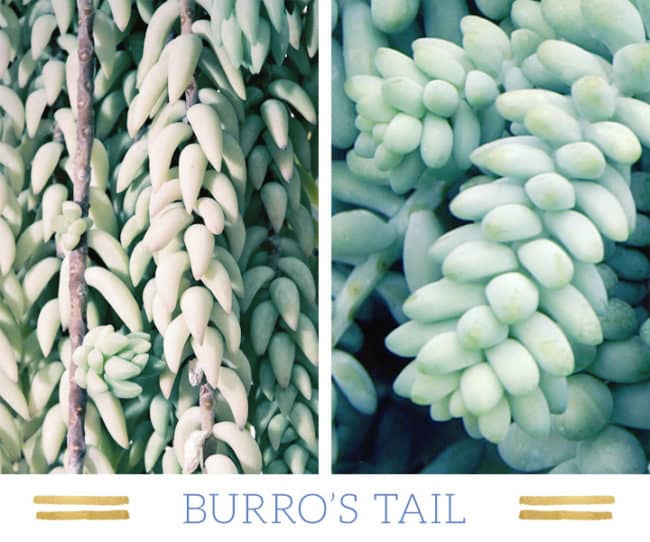
Popular as a house plant, the Burro’s Tail succulent, bears long stems that are plaited with tear-dropped shaped leaves. They are popular for planting in hanging baskets, which allow the long stems to drape to the ground. Colors range from green to blue green, with an ashy finish that gives the colors a muted tone. Place your Burro’s Tail out of direct sunlight, as the leaves will burn. Partial sun, or brightly-lit shade is best.
4. PADDLE PLANT
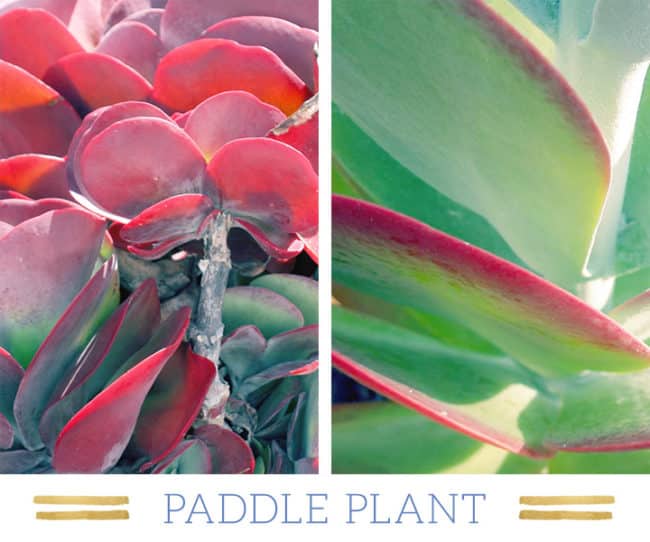
Also known as red pancakes, the paddle plant’s funny nickname is derived from its large, bright red, disk-shaped leaves. They make a striking addition to any xeriscape garden and thrive in hardiness zones 9 to 11. When mature, the paddle plant forms a single flowering stalk from its center. Like many other succulents, the paddle plant is a monocarpic plant, which means that the plant will sprout a flower when it is about to reach the end of its lifecycle. However, there’s good news — to preserve your paddle plant, simply snip off the stalk and replant!
5. LIVING STONE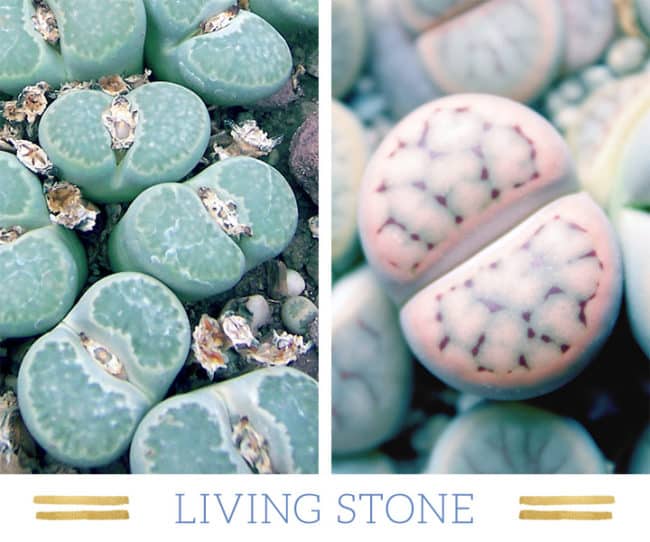
Living stones, known as lithops, are a prime example of evolution at its best. These succulents have evolved to seamlessly blend into their surroundings, and protect themselves from predators. Upon first glance, they look just like small stones or pebbles. However, upon closer examination, these stones are actually living plants.
Originating in southern Africa, where they receive less than 2 inches of rainwater a year, these plants are well adapted to dry climates. The extreme climate conditions cause the plant’s formation to be stripped down to just two leaves, which are fused together at its base where the root holds them together. This formation evolved from the plant’s need to have the least amount of surface area exposed to the hot sun. The thick stone-shaped leaves also allow the plant to store as much water as possible. A direct product of evolution, this is truly a fascinating plant to have in your succulent collection!
6. QUEEN VICTORIA AGAVE
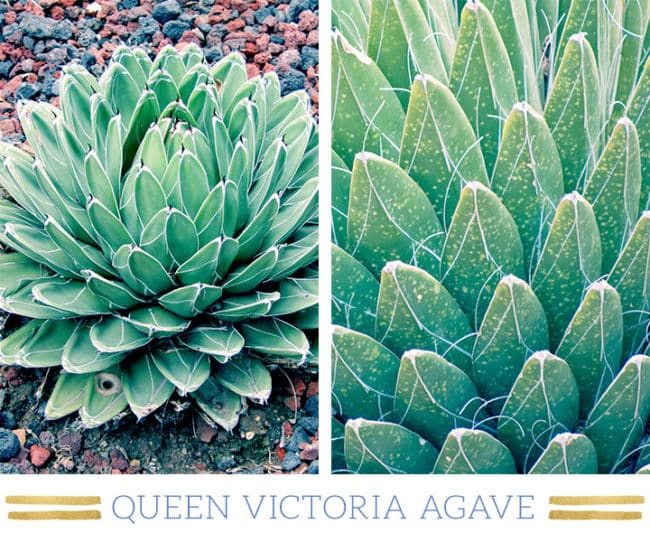
The marble-like striations on the petals of this agave make it a favorite amongst modern landscapers. Scientifically known as Agave victoria-reginae, this agave is native to the Chihuahuan desert of Mexico. It is extremely drought-tolerant and thrives in hardiness zone 7. Shaped like a large rosette, it has a very distinguishing look that’s similar to an artichoke. The spherical arrangement of the leaves allow it to funnel water down towards its root base. In the wild, the Queen Victoria agave can live up to 15 years.
7. ZEBRA CACTUS
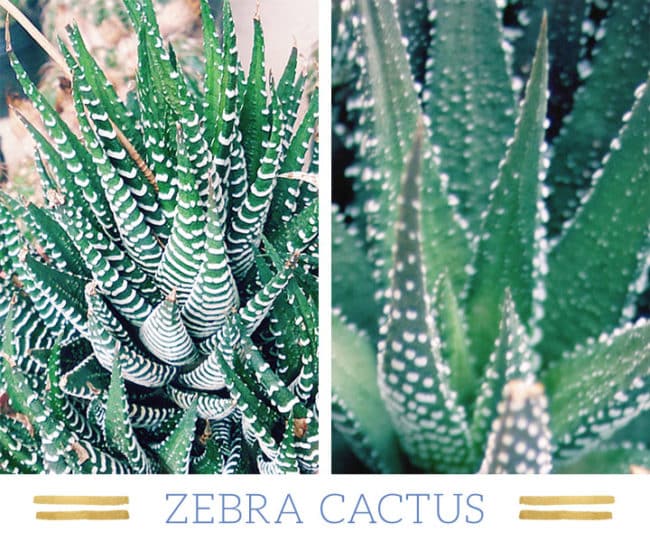
This incredibly slow-growing plant is often compared to aloe. Its contrasting white striations against its dark green leaves makes it a popular houseplant and a trendy way to decorate your home or even office desk. It is easy to maintain, but keep it away from direct sunlight or deep shade. It only needs watering about once a month, and if you’re lucky, the Zebra cactus will flower during the summer if given the proper living conditions throughout the year.
8. GOLDEN BARREL
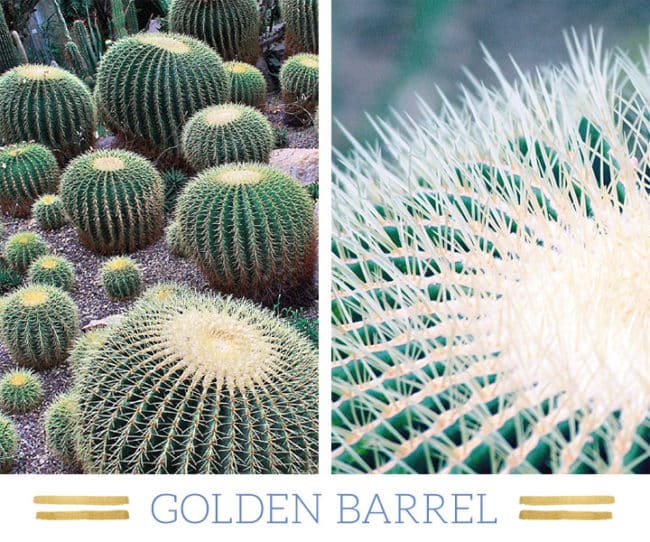
The Golden Barrel cactus is fittingly named for its large, bulbous shape. Adorned with golden yellow spines, this cactus makes for quite a striking centerpiece in any desert landscape — both in the wild and in your garden! The top of the barrel cactus is where its striking flowers bloom. Once pollinated, it closes up and the seeds begin to develop into fruit, which sit on top of the cactus until pulled out. The Golden Barrel cactus is known for being slow-growing and can live for quite a long time.
9. BUNNY EAR CACTUS
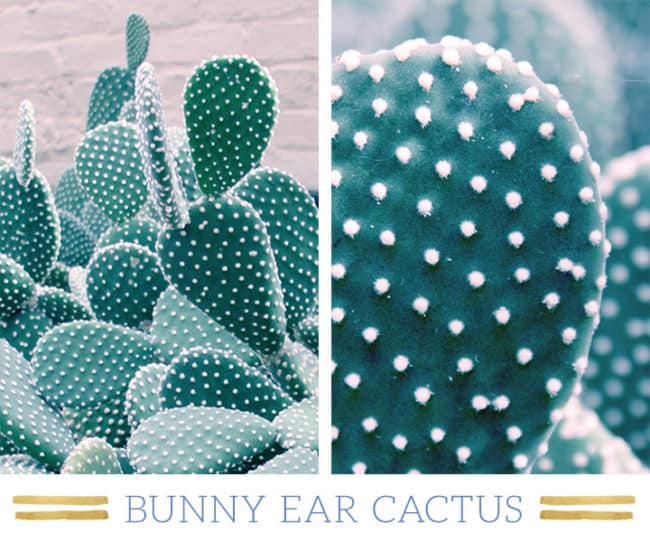
Believe it or not, the Bunny Ear cactus is actually a type of prickly pear cactus. Upon first glance, it may seem that this cactus does not contain any spines. However, if you look closely, the fuzzy specks that adorn this cactus are actually small clusters of tiny little spines. These types of cactus spines are called glochids, and are nearly impossible to remove if caught in your clothing or skin. Bunny Ear cacti are available in both yellow and white spine varieties.
10. FOX TAIL AGAVE
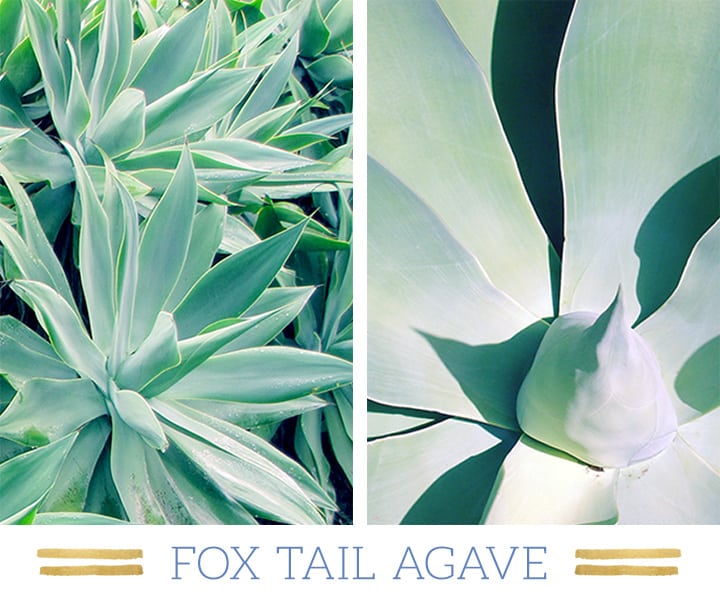
Also known as Agave attenuata, this agave is commonly found in desert gardens and is a popular choice amongst landscapers. The fox tail agave has a centrally curved spear, from which large green leaves emerge and curve back, resulting in a shape that looks like a large green flower. Its leaves are smooth and pliable, and unlike its other agave cousins, the leaves are completely spineless — making it a safe choice for planting in gardens.



